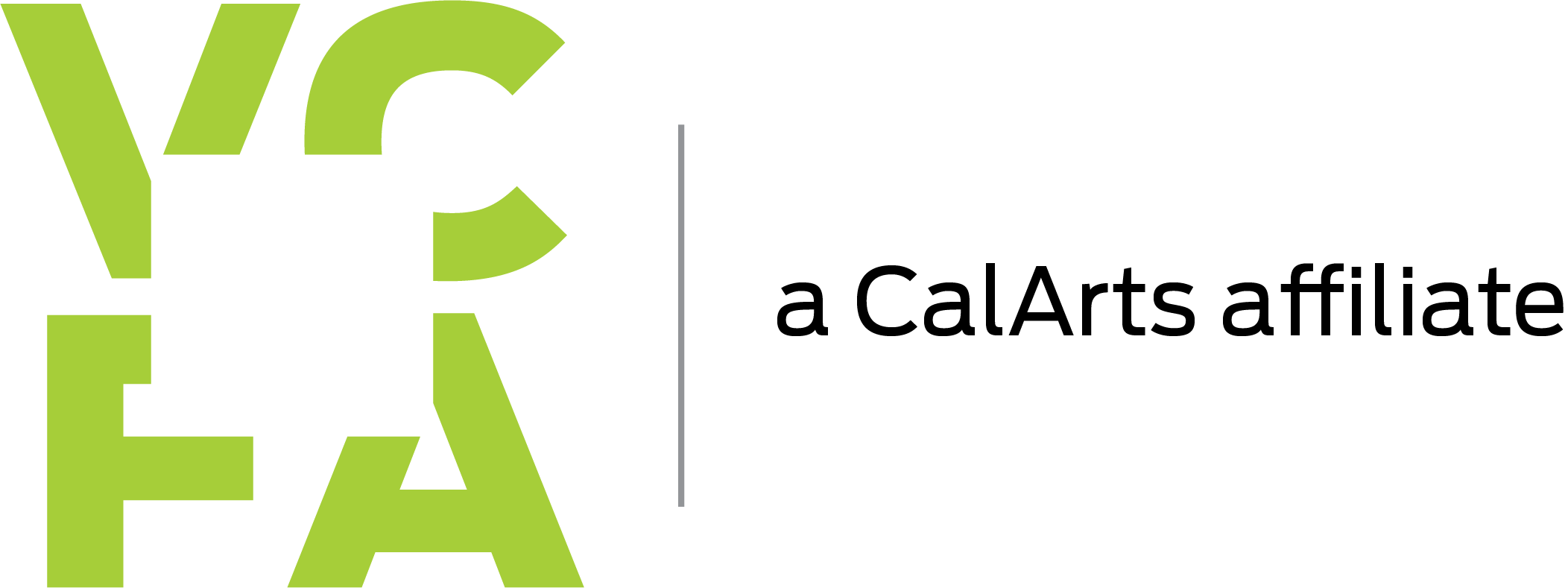VCFA’s Library Director on Attending 100 VCFA Residencies
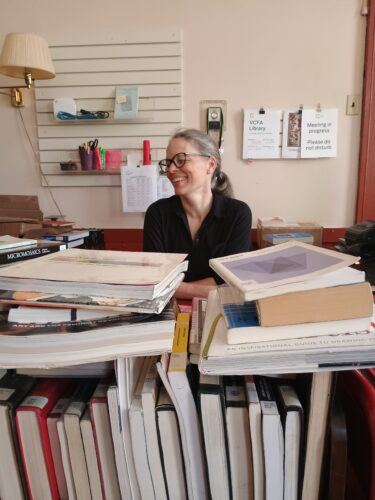 VCFA’s very own Library Director, Tia McCarthy, has recently passed a truly astounding community milestone: in her 10 years at VCFA, she has attended just over 100 residencies.
VCFA’s very own Library Director, Tia McCarthy, has recently passed a truly astounding community milestone: in her 10 years at VCFA, she has attended just over 100 residencies.
Residency is at the core of the VCFA academic structure. VCFA’s six MFA programs—Film, Graphic Design, Music Composition, Visual Art, Writing, and Writing for Children & Young Adults—all follow the low-residency, mentorship model. For two years, students are engaged in the semester-by-semester flow of at home work and in-residence experience. Each semester starts with a nine-day in-person residency at the California Institute of the Arts (CalArts) campus in Valencia, California. While in residence, artists engage in screenings, performances, readings, critiques, workshops, exhibitions, and cross-disciplinary collaborations and events. At residency, current students are paired with their faculty mentor—the industry professional who will help them develop an individual study plan, learning goals, and mentor them one-on-one throughout their semester at home.
When Tia first started at VCFA in 2015 as a Library Assistant, the college had yet to move to a unified, collaborative academic calendar and hosted upwards of 12 residencies a year. Today, residency happens twice a year, and all of our MFA students gather together on campus at CalArts to allow for cross-disciplinary opportunities.
The VCFA library is central to the VCFA experience, especially during residency. At residency, the library is there for our six programs as a foundational support system. Dozens of students visit Tia every day for research needs, printing, and a study break or two. In and among the books and massive stacks of paper, Tia has had the unique opportunity to watch residency evolve and reinvent itself time and time again, and to watch hundreds of students find their voice each semester.
To celebrate her 100 residencies, we asked Tia to explore her memories and break down exactly what makes the VCFA low-residency model so impactful. Read her answers below, and learn more about our six MFA programs.
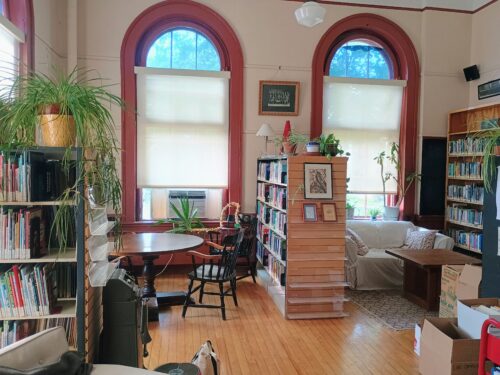
Tia McCarthy’s 100 VCFA Residencies
Q: To start, in your words, can you explain what a VCFA residency is?
A: Residency at VCFA is a fundamental part of our educational model. In the most basic terms, it’s the time when our entire community gathers together to share the work of the past semester and to plan for the coming semester. Crucially, it’s also a time of collaboration and connection, when each of us sees how our work is impacting and, we hope, enriching all of us here at VCFA.
Q: How do different MFA programs approach residency? What’s your role in helping make those residencies happen for each program?
A: Historically, each program planned their residencies in isolation, but over the last two years planning has shifted and expanded so that in addition to program-specific events, we’re making room for cross- and interdisciplinary opportunities. The program directors, assistant directors, and faculty all spend a great deal of time building the framework of readings, critiques, workshops, concerts, and screenings in which both students and faculty get to share the results of months of hard work. My role is supportive and varied. It’s everything from collaborating with faculty around workshop visits to coordinating with the CalArts library around sharing space and services to printing student work for the installations for the two visual programs. I’m also one of many people who helps with the physical set up and breakdown.
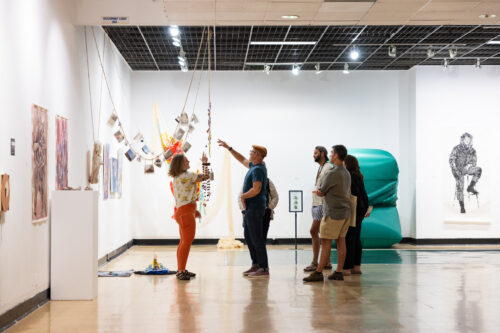 Q: What are the academic, artistic, and personal benefits of residency for our students?
Q: What are the academic, artistic, and personal benefits of residency for our students?
A: There are so many benefits! Residency is the time in our academic year when we have the kinds of galvanizing conversations that happen organically when you bring a group of creative people together. I see so many ideas and projects start to take form when people are sitting around the same table—whether in a workshop, in the library, in the dining hall, or even on the shuttle. You get this incredible dopamine boost from the connections made, both in the scheduled events and the unstructured times in between.
Q: Why, in your opinion, is low-residency a beneficial academic model? What about it makes it such a unique and transformative experience for any learner?
A: Low-residency allows people in so many different phases of life to advance their education. I don’t know too many people who have the ability to take two years away from their obligations to focus exclusively on their academic endeavors. Unlike fully online education, you also get the benefit of in-person connections when we all gather. To me, it’s the best of both worlds.
Q: Can you remember your first ever residency at VCFA? If so, take us back. What do you remember your first impressions being like?
A: My first residency was in July 2015. WCYA was in residence here in Montpelier, and I just remember how heightened everything seemed to be: emotions ran higher, every dial felt like it was turned to 11, for me as well as for the students! The library, though, was always a bit of a respite from the intensity. Jim Nolte, our former library director, managed to project a wonderfully calming presence even as he expressed such enthusiasm for his work. He was an incredible role model.
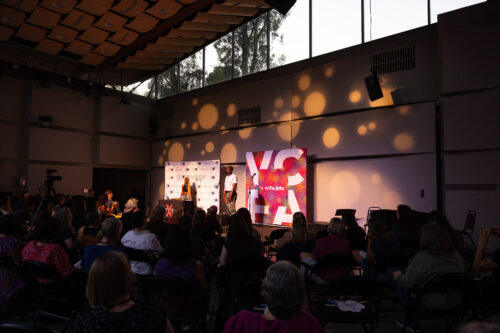 Q: How have you watched VCFA residencies grow and evolve over the years?
Q: How have you watched VCFA residencies grow and evolve over the years?
A: The most obvious changes, of course, have been moving residency from the Vermont campus, and bringing all six programs together simultaneously. But one of the benefits of that has been getting to see an openness growing in the programs. I feel like there’s a greater interest in expanding opportunities internally even as new connections are developing between the disciplines. Another benefit from working together so closely is how the programs are learning processes from each other, and adapting them for their own needs. It would be very easy for these six groups to be adversarial in grabbing what they feel they need most, but instead it’s an incredibly collaborative process, and that energy really shapes how our faculty and students experience residency.
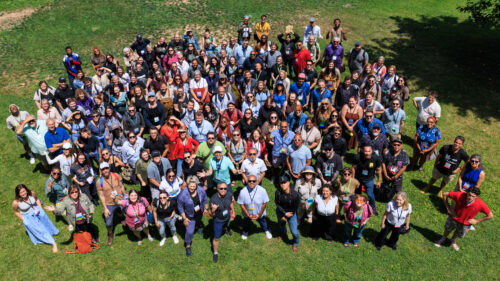 Q: Do you have a favorite residency memory that stands out above the rest?
Q: Do you have a favorite residency memory that stands out above the rest?
A: One of my standout residency moments actually came before I was on staff. I live in Montpelier and was able to come to campus for public events before I started to work here. I brought my then-eight-year-old daughter to a performance during the Music Composition residency in 2014. Renee Baker (MC ’15), was presenting one of her compositions. It was one of the most dynamic, exciting performances I’ve ever witnessed. Her own physicality in interacting with the musicians to conjure the sounds from their instruments was spellbinding. At the end of the performance, the musicians all turned their scores to the audience so we could see that Renee, who is also a visual artist, had created hand-painted scores for each part—something I’d never seen before. That experience will forever be one I cherish for introducing me to an entirely new way to conceive of how music is created and captured and embodied.
Q: What is always your favorite part of residency no matter what?
A: I have the best conversations with people when we’re all together. I’m in a unique position—my job brings me into direct contact with just about everyone in every program, and while I’m completely psyched to nerd out with folks about what they’re researching, I love that I get to connect with people on so many other levels than that. I’ve made wonderful friends in every part of the college because of residency.
Q: What does a good VCFA residency always include?
- The button maker!
- The songwriters showcase
- At least one strange ride on the shuttle or in a carshare
- Sneaking cookies from the cafeteria for the CalArts library staff. I’m pretty sure that I can just walk out openly with them, but it’s much more fun if I feel like I’m getting away with something.
Q: And finally, do you have any words of advice for our community about the residency experience?
A: Come to residency with an openness to sharing. Know that there are quiet moments and spaces like the library when you need them. And bring tissues! Graduation gets me every time.
